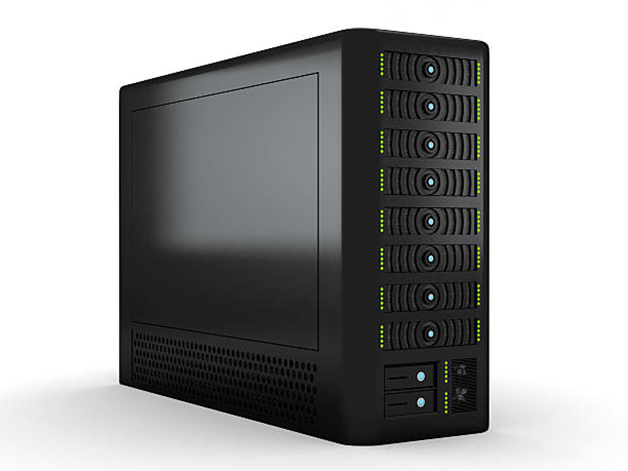The Best Lightweight Linux Server OS for Hosting and Development

Strong 8k brings an ultra-HD IPTV experience to your living room and your pocket.
In today’s fast-paced and increasingly digital world, choosing the right server operating system (OS) can be a game-changer for developers, sysadmins, and web hosting providers alike. There is a growing demand for scalable, cost-effective, and performance-optimized solutions due to the rapid expansion of startups, tech hubs, and online platforms.
Lightweight Linux server OS distributions have become a go-to choose thanks to their minimal resource consumption, flexibility, and open-source nature. These operating systems are designed to perform efficiently even on low-spec hardware or virtual private servers (VPS), making them ideal for businesses looking to minimize overhead without sacrificing performance or security.
Whether you're managing cloud-based applications, hosting multiple websites, deploying Docker containers, or running CI/CD pipelines, the right lightweight Linux server OS can dramatically impact your server’s uptime, speed, and overall reliability. With numerous distributions available — each with its own set of tools, philosophies, and user communities — selecting the best fit for your specific use case can be overwhelming.
This comprehensive guide is tailored to help developers and web hosting by exploring the best lightweight and cheap Linux server operating systems. We’ll break down the most popular choices by highlighting their core features, performance benchmarks, security measures, and suitability for various real-world scenarios. Whether you're setting up a small web server, deploying scalable cloud infrastructure, or experimenting with development environments, this guide will help you make an informed, confident decision.
Why Choose a Lightweight Linux Server Operating System?
One of the primary reasons to opt for a lightweight and cheap Linux server OS is its suitability for Virtual Private Servers (VPS) with limited resources. VPS plans, especially cheap Linux server hosting options offered by web hosting providers, often come with restricted memory and processing capabilities. Lightweight distros such as Alpine Linux or Debian Minimal can run smoothly even with as little as 256–512 MB RAM, ensuring that you make the most out of your allocated server resources without incurring additional costs.
Lightweight server OSs are also a top choice for developers seeking streamlined environments. Rather than dealing with bloated systems filled with unnecessary packages and background processes, lightweight Linux distributions allow developers to build their systems from the ground up—only installing the tools, libraries, and frameworks they truly need. This results in faster boot times, reduced system clutter, and a more focused development environment. Additionally, the speed and performance advantages of a lightweight Linux OS improve workflow efficiency, particularly for coding, debugging, and testing on local or remote cheap Linux server setups.
Another significant benefit lies in the potential for operational cost reduction. By running lightweight OSs on existing hardware or on entry-level cloud instances, organizations can dramatically cut infrastructure expenses. Instead of purchasing new servers or upgrading to premium hosting tiers, businesses can deploy lean, efficient Linux distributions that run seamlessly on older machines or cheap VPS hosting plans. For startups and small businesses operating in competitive tech landscape, using a cheap Linux server with a lightweight operating system can offer excellent performance without compromising their financial flexibility.
Furthermore, lightweight affordable Linux distributions shine in resource-constrained regions were power outages, limited internet connectivity, or older hardware configurations may be common. Many educational institutions, non-profits, and government IT departments rely on lightweight solutions to keep their systems functional and accessible. A small installation footprint, low power consumption, and fewer dependencies make these affordable operating systems ideal for such environments. When deployed on a cheap Linux server, these distributions provide a reliable and scalable solution that can adapt to various infrastructure limitations without sacrificing performance.
In essence, whether you're running a personal blog, deploying scalable applications, experimenting with containerized environments, or managing enterprise workloads, a lightweight cheap Linux server operating system delivers the perfect balance between performance, flexibility, and affordability. For individuals and organizations looking to get the most out of a cheap Linux server, choosing a lightweight distribution is not just an option—it’s a strategic advantage.
Top Lightweight Linux Server Operating System Options-
1. Alpine Linux
Alpine Linux is renowned for its security-oriented, lightweight design, making it ideal for containers and minimalistic VPS setups.
Key Features:
• Minimal Footprint: Base installation is approximately 130 MB.
• Security-Focused: Employs hardened security practices.
• Resource-Efficient: Utilizes musl libc and BusyBox.
• Customizable: Add only the components you need.
Ideal Use Cases:
• Docker containers
• Minimal web servers
• Firewall and networking tools
2. Debian Minimal
Debian Minimal offers a stripped-down version of Debian, focusing on providing only essential components for web server operations.
Key Features:
• Customizable Installation: Install only necessary packages.
• Stability: Known for rock-solid performance.
• Low Resource Usage: Operates smoothly with as little as 512 MB RAM.
Ideal Use Cases:
• Web hosting (Apache, NGINX)
• Application servers
• Database servers (MySQL, PostgreSQL)
3. Arch Linux
Arch Linux is a minimalist, rolling-release distribution that allows users to build a highly customized environment from the ground up.
Key Features:
• Minimalist by Default: Starts with a bare-bones setup.
• Rolling Release: Always up-to-date with the latest software.
• Resource-Friendly: Optimized for minimal resource consumption.
Ideal Use Cases:
• Advanced users needing full control over their setup
• Custom server deployments
• Development environments
4. Tiny Core Linux
Tiny Core Linux is one of the smallest Linux distributions, offering a minimalistic approach suitable for experienced users.
Key Features:
• Extremely Lightweight: Core version is just 11 MB.
• Modular Design: Add only the functionalities you need.
• Fast Boot Times: Runs entirely in RAM.
Ideal Use Cases:
• Rescue environments
• Testing and temporary setups
• Systems with extremely limited resources
5. Puppy Linux
Puppy Linux is a user-friendly, lightweight distribution that runs entirely in RAM, providing fast performance even on older hardware.
Key Features:
• RAM Operation: Ensures quick operations.
• Modular Customization: Personalize components as needed.
• Portability: Can boot from USB or CD.
Ideal Use Cases:
• Low-resource VPS servers
• Rescue environments
• Testing and temporary setups
6. Damn Small Linux (DSL)
Damn Small Linux is a minimalistic distribution designed to run on older hardware with very limited resources.
Key Features:
• Ultra-Lightweight: ISO size of just 50 MB.
• Low Resource Requirements: Runs on systems with as little as 64 MB RAM.
• Live USB Support: Can be run directly from USB.
Ideal Use Cases:
• Reviving old hardware
• Educational purposes
• Lightweight desktop environments
7. Ubuntu Server (Minimal Installation)
Although Ubuntu is often associated with desktop environments, its Minimal Server Edition is a powerful and lean option ideal for hosting and development, especially in cloud-based environments.
Key Features:
• Long-Term Support (LTS): Offers five years of security and maintenance updates.
• Large Community Support: Extensive online documentation and active forums.
• Cloud-Ready: Integrates well with major cloud platforms like AWS, Google Cloud, and DigitalOcean.
• Customizable: Choose only the services and packages you need during installation.
Ideal Use Cases:
• Web and app hosting
• Containerization with Docker
• Cloud-based development platforms
8. CentOS Stream / Rocky Linux / AlmaLinux
CentOS used to be the go-to enterprise-grade operating system for servers until the switch to CentOS Stream. Now, Rocky Linux and AlmaLinux have taken its place for those seeking a lightweight and stable RHEL-compatible affordable operating system.
Key Features (Rocky/AlmaLinux):
• RHEL compatibility
• Minimal installation options
• Robust and secure
• Actively developed and supported
Ideal Use Cases:
• Hosting environments
• High-performance databases
• Secure backend systems
9. Clear Linux
Backed by Intel, Clear Linux is a performance-centric distro designed for cloud and container workloads, optimized for Intel architectures.
Key Features:
• Auto-optimized for Intel hardware
• Minimal memory and CPU overhead
• Bundle system for quick and clean package installs
• Fast boot and execution time
Ideal Use Cases:
• High-performance development environments
• Scientific computing
• Lightweight container-based deployment
How to Choose the Best Lightweight Linux Operating System for Your Needs?
When selecting the most appropriate lightweight cheap Linux server Operating System for your hosting or development environment, consider the following criteria:
1. System Requirements
Check the minimum hardware requirements. For resource-constrained environments, distros like Alpine, Tiny Core, or DSL are perfect. For more robust systems, go for Debian Minimal or Rocky Linux.
2. Ease of Use
Beginners may prefer user-friendly environments like Ubuntu Server or Puppy Linux. Advanced users might enjoy the customizability of Arch or Alpine.
3. Security Features
If security is your top concern, Alpine Linux and Rocky Linux offer hardened features suitable for production environments.
4. Package Management
Choose an affordable Operating System that aligns with your package manager preference:
• apt (Ubuntu/Debian)
• dnf/yum (Rocky/AlmaLinux)
• apk (Alpine)
• pacman (Arch Linux)
5. Use Case Suitability
Tailor your choice based on use case:
• Web Hosting: Debian Minimal, Ubuntu Server, Rocky Linux
• Containers: Alpine Linux, Clear Linux
• Development: Arch Linux, Debian, Ubuntu
• Legacy Systems: DSL, Puppy Linux
Popular Use Cases-
Lightweight cheap Linux server distros are especially popular for the following scenarios:
• Start-up Hosting Providers
Many start-ups and small-scale hosting provider use Alpine or Debian Minimal to reduce resource usage and improve cost-efficiency.
• Educational Institutions
Universities favour Puppy Linux or Tiny Core Linux for lab setups, training, and student environments due to their low system requirements.
• Cloud & VPS Environments
Cloud VPS providers, often offer Alpine, Ubuntu Minimal, and Debian due to their compatibility and performance on limited resources.
Final Thoughts-
Choosing the best lightweight Linux server Operating System for web hosting and development depends on your specific needs and technical experience. Whether you're hosting websites, running cloud-native apps, or setting up development sandboxes, there's a Linux distro that fits your use case perfectly.
Here’s a quick recommendation summary:
• Best for Containers: Alpine Linux
• Best All-Purpose Server OS: Debian Minimal
• Best for Performance: Clear Linux
• Best for Beginners: Ubuntu Server (Minimal)
• Best for Advanced Users: Arch Linux
• Best for Legacy Hardware: DSL or Puppy Linux
• Best Enterprise Replacement: Rocky Linux / AlmaLinux
Note: IndiBlogHub features both user-submitted and editorial content. We do not verify third-party contributions. Read our Disclaimer and Privacy Policyfor details.







